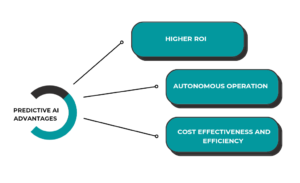Here are 20 tricky job interview questions along with suggested responses to help you navigate them effectively:
1. Tell me about yourself.
- Best Answer: Start with a brief overview of your professional background, highlight your key achievements, and conclude with what you are looking for in your next opportunity.
- Example: “I have over 5 years of experience in marketing, specializing in digital strategies. I successfully led a campaign that increased our online engagement by 40% last year. I am now looking for a role where I can further develop my skills and contribute to a dynamic team.”
2. What are your greatest weaknesses?
- Best Answer: Choose a real weakness and describe what you’re doing to improve it.
- Example: “I tend to be a perfectionist, which can slow me down. However, I’m learning to prioritize tasks and set realistic goals to maintain quality without compromising deadlines.”
3. Why should we hire you?
- Best Answer: Highlight your unique skills, experiences, and how they align with the company’s needs.
- Example: “I bring a unique combination of technical expertise and creative problem-solving skills that will help your team achieve its objectives. My experience in project management and my passion for innovation make me a strong fit.”
4. Tell me about a time you faced a challenge at work.
- Best Answer: Use the STAR method (Situation, Task, Action, Result) to structure your response.
- Example: “In my last job, we faced a tight deadline on a major project. I organized daily check-ins, delegated tasks based on team strengths, and we delivered on time while exceeding quality expectations.”
5. Where do you see yourself in five years?
- Best Answer: Focus on your professional growth and how it aligns with the company’s future.
- Example: “In five years, I see myself in a leadership position, having taken on more responsibilities and contributing to strategic decision-making within the company.”
6. Why are you leaving your current job?
- Best Answer: Keep it positive, focusing on future opportunities rather than negative experiences.
- Example: “I’ve enjoyed my time at my current job, but I’m looking for new challenges that align more closely with my career goals and allow for growth.”
7. What did you like least about your last job?
- Best Answer: Mention something minor and how you learned from that experience.
- Example: “While I appreciated my last role, I found the lack of collaborative projects limiting. I enjoy teamwork and believe it drives innovation.”
8. How do you handle stress and pressure?
- Best Answer: Share techniques you use to manage stress effectively.
- Example: “I handle stress by staying organized, breaking tasks into manageable parts, and taking short breaks to recharge. This helps me maintain focus and productivity.”
9. Describe your ideal work environment.
- Best Answer: Align your preferences with the company’s culture.
- Example: “I thrive in collaborative environments that encourage creativity and open communication, as I believe teamwork drives the best results.”
10. What are your salary expectations?
- Best Answer: Provide a salary range based on market research and your experience.
- Example: “Based on my research and the responsibilities of this role, I would expect a salary in the range of 60,000to70,000.”
11. What motivates you?
- Best Answer: Mention intrinsic motivators that relate to the job.
- Example: “I am motivated by the opportunity to solve complex problems and make a positive impact on my team and the company.”
12. How do you prioritize your work?
- Best Answer: Explain your approach to time management and prioritization.
- Example: “I use a combination of to-do lists and project management tools to prioritize tasks based on deadlines and importance, ensuring I stay on track.”
13. How do you handle criticism?
- Best Answer: Show that you are open to feedback and willing to learn.
- Example: “I view criticism as an opportunity for growth. I take feedback seriously and use it to improve my performance.”
14. Tell me about a time you disagreed with a team member.
- Best Answer: Focus on how you resolved the disagreement constructively.
- Example: “When I disagreed with a team member about a project direction, I suggested we present both viewpoints to our manager and collaborate on a solution. This led to a better outcome.”
15. What would your coworkers say about you?
- Best Answer: Highlight positive traits that reflect your work ethic.
- Example: “My coworkers would describe me as reliable, hardworking, and always willing to lend a hand when needed.”
16. How do you stay current in your field?
- Best Answer: Mention specific resources or methods you use to keep your skills updated.
- Example: “I regularly attend industry conferences, participate in webinars, and follow key thought leaders on social media to stay informed about trends and best practices.”
17. If I were to ask your last boss about you, what would they say?
- Best Answer: Reflect on the positive aspects of your performance.
- Example: “My last boss would likely say I am a dedicated team player who consistently meets deadlines and contributes innovative ideas to our projects.”
18. What do you consider your biggest professional achievement?
- Best Answer: Choose a significant accomplishment that showcases your skills.
- Example: “My biggest achievement was leading a cross-functional team to launch a product that generated $1 million in revenue within the first year.”
19. What is your management style?
- Best Answer: Describe a style that aligns with the company’s culture.
- Example: “I believe in a participative management style, encouraging team input and fostering a collaborative environment where everyone feels valued.”
20. Do you have any questions for us?
- Best Answer: Always prepare insightful questions to show your interest.
- Example: “Can you tell me more about the team I would be working with and the key challenges you foresee in this role?”
By preparing thoughtful answers to these tricky interview questions, you can present yourself confidently and effectively to potential employers.

